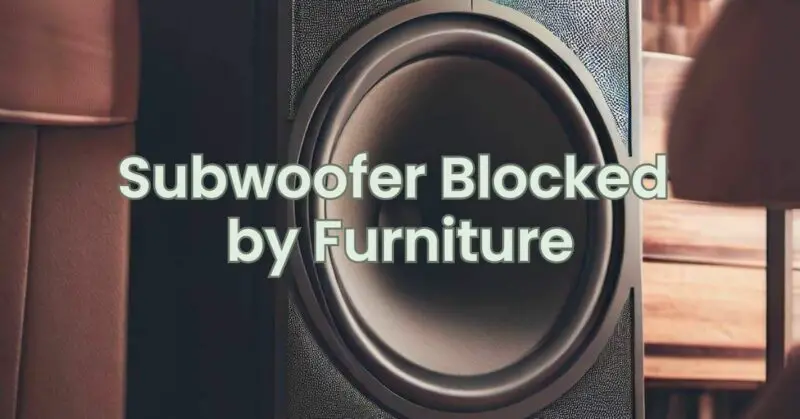Finding the ideal placement for a subwoofer can be a challenge, especially when faced with the obstacle of furniture blocking its optimal position. While subwoofers are designed to deliver powerful low-frequency effects, their placement can significantly impact their performance. Here are some tips for dealing with furniture blockage and optimizing your subwoofer’s placement:
- Assess the Furniture Layout
Start by evaluating the furniture layout in your room. Identify which pieces of furniture are blocking the path between the subwoofer and the listening area. Consider the size and position of the furniture items, as well as their proximity to the subwoofer. This assessment will help you understand the extent of the blockage and potential solutions.
- Rearrange Furniture
One option is to rearrange your furniture to create a clear path between the subwoofer and the listening area. This may involve moving or repositioning furniture items to allow for better subwoofer placement. Consider the flexibility of your furniture arrangement and experiment with different configurations to find the best compromise between aesthetics, functionality, and subwoofer performance.
- Subwoofer Placement Options
If rearranging the furniture is not feasible or desirable, explore alternative subwoofer placement options that work around the furniture blockage:
a. Corner Placement: Subwoofers tend to benefit from corner placement as it can enhance bass response due to increased room boundary effects. If one of the corners in your room is relatively unobstructed, consider placing the subwoofer there. Adjust the subwoofer’s position within the corner to find the optimal balance between bass reinforcement and overall sound quality.
b. Side Wall Placement: If the furniture blockage is limited to one side of the room, consider placing the subwoofer along the side wall. Position it a few feet away from the furniture, ensuring that it remains clear of any potential obstructions. This placement can still provide good bass performance while minimizing the impact of the furniture blockage.
c. Raise the Subwoofer: Another option is to elevate the subwoofer slightly above the floor using a dedicated stand or platform. By raising the subwoofer, you can potentially minimize the impact of furniture blockage and improve bass propagation throughout the room. Experiment with different heights to find the optimal positioning that works best for your room and furniture layout.
- Room Acoustics Considerations
Take into account the acoustic characteristics of your room when dealing with furniture blockage. Some furniture items, such as large bookshelves or cabinets, may absorb or reflect sound waves, potentially affecting the subwoofer’s performance. Consider incorporating acoustic treatments, such as bass traps or wall panels, to help mitigate any negative effects and optimize the bass response in the room.
- Subwoofer Level and Settings
Once you have found a suitable placement for your subwoofer despite the furniture blockage, make sure to fine-tune its level and settings. Adjust the subwoofer’s volume or use any available controls, such as crossover frequency and phase adjustment, to optimize its integration with the main speakers and achieve a balanced and cohesive sound.
Remember, the goal is to strike a balance between optimal subwoofer placement and practical considerations. While it’s ideal to have a clear path between the subwoofer and the listening area, sometimes compromises need to be made due to furniture placement or room layout constraints. With careful placement, experimentation, and consideration of the room’s acoustics, you can still achieve satisfying bass performance and enjoy a more immersive audio experience, even with furniture blockage.


